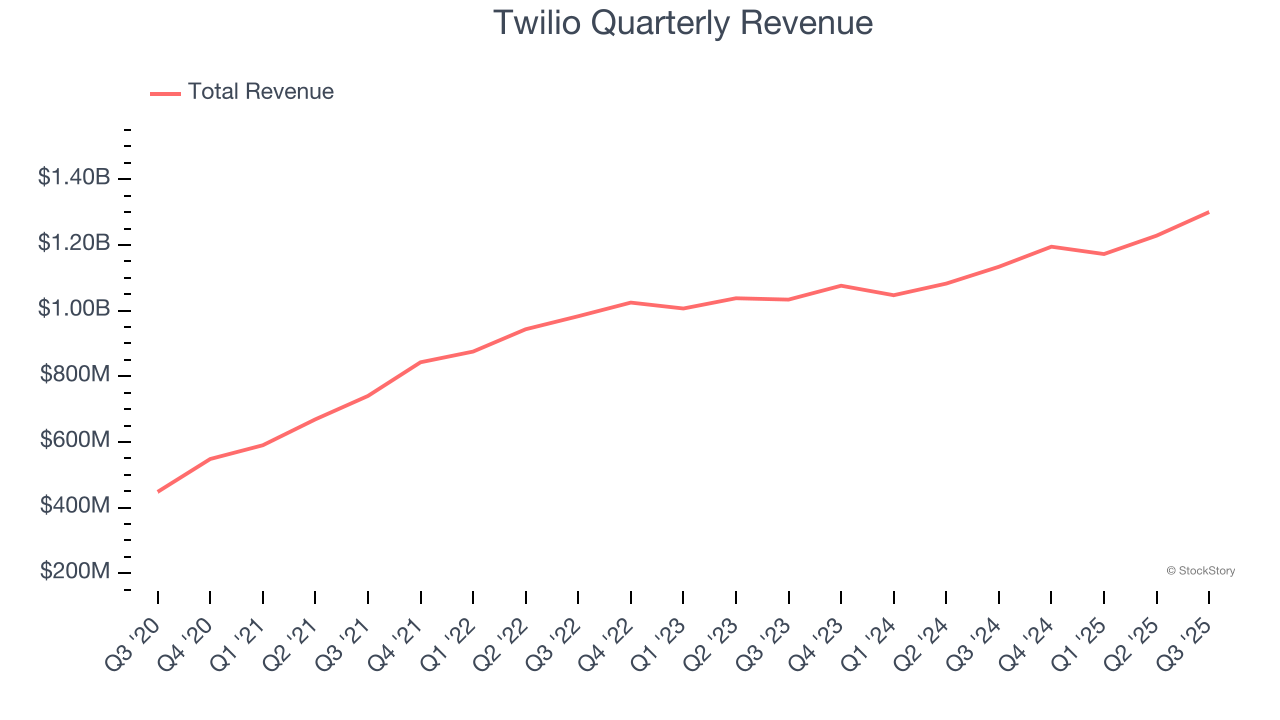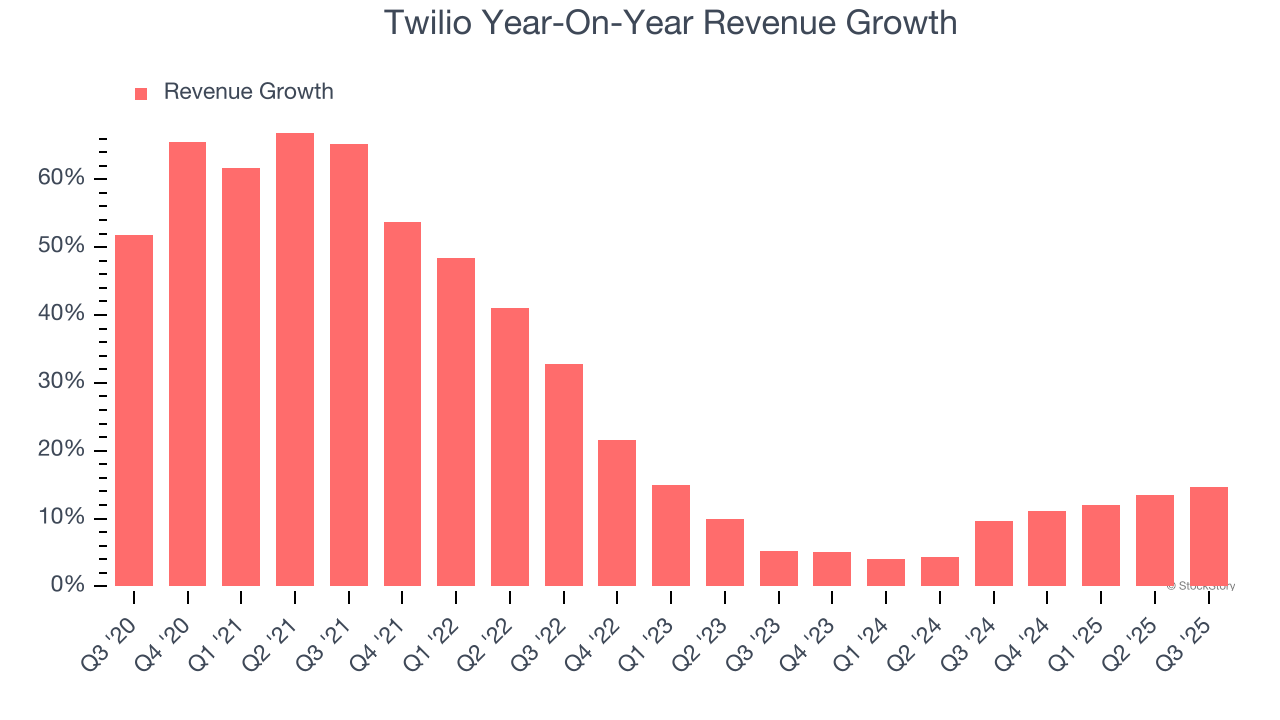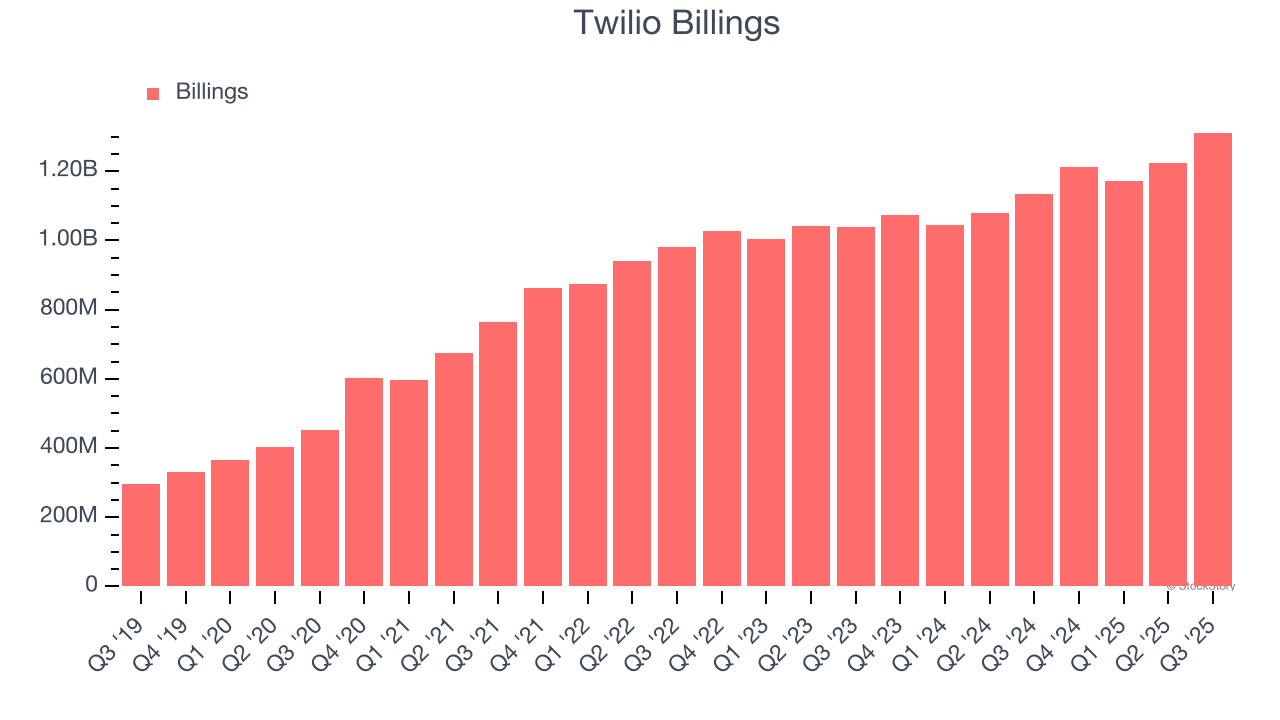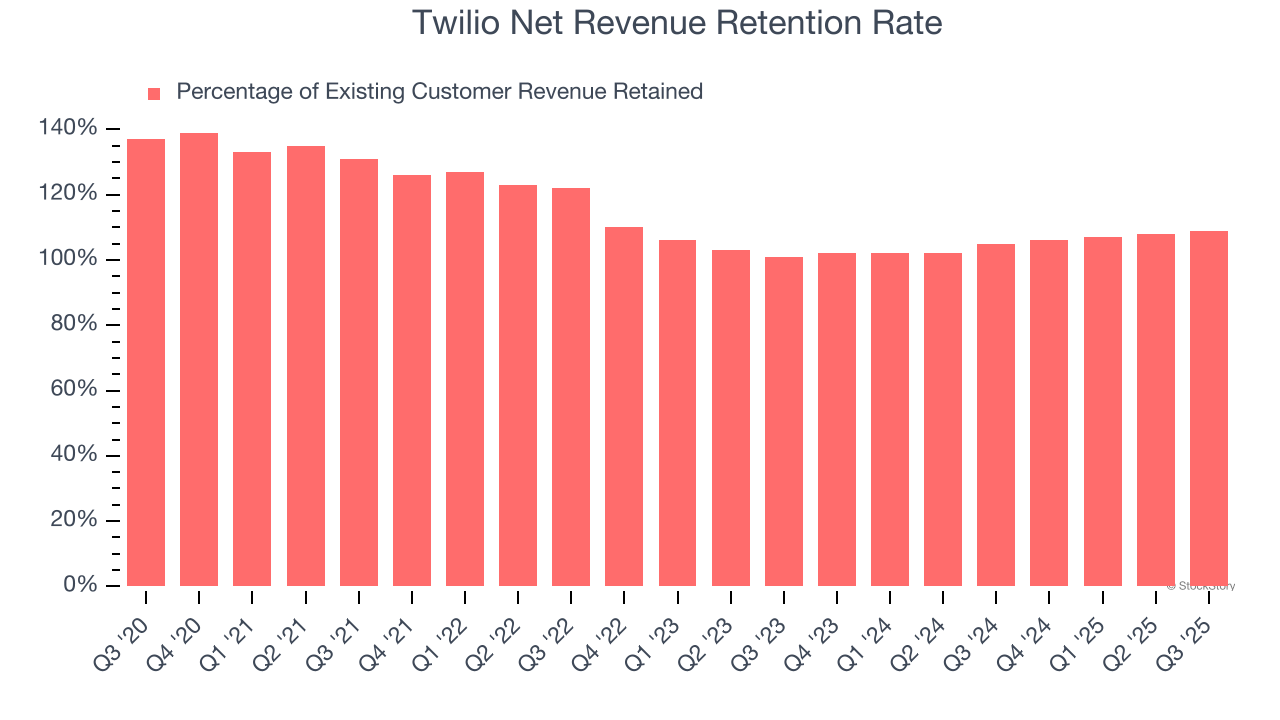
Customer engagement platform Twilio (NYSE: TWLO) reported Q3 CY2025 results exceeding the market’s revenue expectations, with sales up 14.7% year on year to $1.3 billion. Guidance for next quarter’s revenue was optimistic at $1.32 billion at the midpoint, 2.3% above analysts’ estimates. Its non-GAAP profit of $1.25 per share was 17% above analysts’ consensus estimates.
Is now the time to buy Twilio? Find out by accessing our full research report, it’s free for active Edge members.
Twilio (TWLO) Q3 CY2025 Highlights:
- Revenue: $1.3 billion vs analyst estimates of $1.25 billion (14.7% year-on-year growth, 3.8% beat)
- Adjusted EPS: $1.25 vs analyst estimates of $1.07 (17% beat)
- Adjusted Operating Income: $234.5 million vs analyst estimates of $212.1 million (18% margin, 10.6% beat)
- Revenue Guidance for Q4 CY2025 is $1.32 billion at the midpoint, above analyst estimates of $1.29 billion
- Adjusted EPS guidance for Q4 CY2025 is $1.19 at the midpoint, above analyst estimates of $1.14
- Operating Margin: 3.1%, up from -0.4% in the same quarter last year
- Free Cash Flow Margin: 19%, down from 21.4% in the previous quarter
- Customers: 392,000, up from 349,000 in the previous quarter
- Net Revenue Retention Rate: 109%, up from 108% in the previous quarter
- Billings: $1.31 billion at quarter end, up 15.7% year on year
- Market Capitalization: $17.12 billion
Company Overview
Known for the clever "Twilio Magic" demo that had developers creating functioning communications apps in minutes, Twilio (NYSE: TWLO) provides a platform that enables businesses to communicate with their customers through voice, messaging, email, and other digital channels.
Revenue Growth
A company’s long-term sales performance is one signal of its overall quality. Any business can experience short-term success, but top-performing ones enjoy sustained growth for years. Over the last five years, Twilio grew its sales at a solid 25.9% compounded annual growth rate. Its growth beat the average software company and shows its offerings resonate with customers.

We at StockStory place the most emphasis on long-term growth, but within software, a half-decade historical view may miss recent innovations or disruptive industry trends. Twilio’s recent performance shows its demand has slowed as its annualized revenue growth of 9.2% over the last two years was below its five-year trend. 
This quarter, Twilio reported year-on-year revenue growth of 14.7%, and its $1.3 billion of revenue exceeded Wall Street’s estimates by 3.8%. Company management is currently guiding for a 10.1% year-on-year increase in sales next quarter.
Looking further ahead, sell-side analysts expect revenue to grow 6.7% over the next 12 months, a slight deceleration versus the last two years. This projection doesn't excite us and indicates its products and services will face some demand challenges.
Here at StockStory, we certainly understand the potential of thematic investing. Diverse winners from Microsoft (MSFT) to Alphabet (GOOG), Coca-Cola (KO) to Monster Beverage (MNST) could all have been identified as promising growth stories with a megatrend driving the growth. So, in that spirit, we’ve identified a relatively under-the-radar profitable growth stock benefiting from the rise of AI, available to you FREE via this link.
Billings
Billings is a non-GAAP metric that is often called “cash revenue” because it shows how much money the company has collected from customers in a certain period. This is different from revenue, which must be recognized in pieces over the length of a contract.
Twilio’s billings came in at $1.31 billion in Q3, and over the last four quarters, its growth slightly lagged the sector as it averaged 13.5% year-on-year increases. This performance mirrored its total sales and suggests that increasing competition is causing challenges in acquiring/retaining customers. 
Customer Retention
One of the best parts about the software-as-a-service business model (and a reason why they trade at high valuation multiples) is that customers typically spend more on a company’s products and services over time.
Twilio’s net revenue retention rate, a key performance metric measuring how much money existing customers from a year ago are spending today, was 108% in Q3. This means Twilio would’ve grown its revenue by 7.5% even if it didn’t win any new customers over the last 12 months.

Trending up over the last year, Twilio has a decent net retention rate, showing us that its customers not only tend to stick around but also get increasing value from its software over time.
Key Takeaways from Twilio’s Q3 Results
We were impressed by Twilio’s strong growth in customers this quarter. We were also glad its EPS guidance for next quarter exceeded Wall Street’s estimates. Zooming out, we think this was a good print with some key areas of upside. The stock traded up 4.6% to $118.09 immediately after reporting.
Twilio had an encouraging quarter, but one earnings result doesn’t necessarily make the stock a buy. Let’s see if this is a good investment. The latest quarter does matter, but not nearly as much as longer-term fundamentals and valuation, when deciding if the stock is a buy. We cover that in our actionable full research report which you can read here, it’s free for active Edge members.







